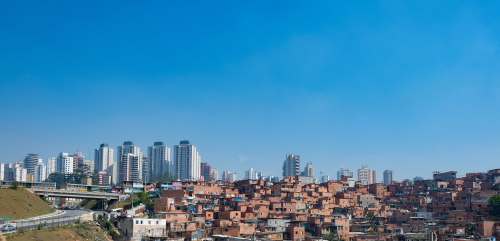A critical moment
The Saudi G20 presidency agenda unapologetically focuses on the future, but first the G20 must emerge from the present. It has a global responsibility to act decisively – and prevent the rest of the world from facing paralysis
Before the pandemic, what progress had been made on the Sustainable Development Goals (SDGs)?
Before the pandemic, the world as a whole was making notable progress. We saw the greatest gains on SDG 9: Industry, Innovation and Infrastructure and SDG 1: No Poverty. In the broader sense, just look to United Nations Development Programme’s Multidimensional Poverty Index – 271 million people were lifted out of poverty in India alone in just a 10-year period.
The big change is the ways the SDGs have shifted how we think about and invest in development. We can see the SDGs as a ‘risk map’ of the 21st century, reflected in the 17 areas where we must work together. We can also recognise them as a means to think systemically about how we can best leverage a dollar, yen or rupiah to address critical areas such as electricity access or environmental degradation. Indeed, the SDGs recognise you have to connect ‘investments’ in one goal to the others to create multiple dividends.
Another key element is that the SDGs are a universal agenda. Development depends as much on decisions in an industrialised country as in a developing country. Moreover, the SDGs have emerged as a lens for the private sector to look at a larger socio-economic reality – beyond bottom lines.
In many ways, the SDGs have come to encapsulate the challenges of our time, and a global plan to tackle them.
How has progress been set back by COVID-19?
The pandemic reveals the legacy of failed development including the underlying conditions of continued inequality and unsustainability. Indeed, UNDP anticipates that global human development, a combination of the world’s education, health and income, will decline this year for the first time since 1990.
Global disparities are more apparent than ever. Look to the fact that Pakistan and Kenya can pay up to 64 times as much as the United States to raise a one-year bond during a crisis. Half the world lacks social protection or health care and 750 million people globally remain unconnected: unable to access online learning or work from home.
Yet now is also a time when countries are rethinking strategic investments. Bets are being made on how they transform the investment landscape and therefore accelerate progress on the SDGs.
How has UNDP been helping countries respond to the pandemic?
The UN’s response to COVID-19 includes a large-scale, coordinated and comprehensive health response, guided by the World Health Organization, the humanitarian response led by UN Office for the Coordination of Humanitarian Affairs and the socio-economic response, which is led by UNDP.
Just weeks after the outbreak of the COVID-19 crisis, UNDP’s partners worked with us to reprogramme their funds. Donors and fresh funding mobilised almost $750 million to deploy on the ground. UNDP’s Rapid Response Facility reached approximately 100 countries in the first weeks of operation. That enabled UNDP to help countries prepare, respond and recover in the face of COVID-19 – everything from procuring critical medical supplies to applying e-health and e-government platforms to ensure the full business continuity of governments across the globe.
Indeed, the UNDP Accelerator Labs were also a vital asset for countries at this critical time. Their surprising results included everything from developing a mobile app to track the virus in Cabo Verde to helping roll out robots in COVID-19 treatment centres in Rwanda to minimise contact between patients and health workers.
How are you helping countries look beyond the pandemic?
In leading the UN’s socio-economic response to the pandemic, UNDP is working with UN country teams and our partners to conduct assessments of impact in 135 countries. These assessments provide critical advice to policymakers and help countries formulate vital response plans.
Informed by this engagement, UNDP’s ‘Offer 2.0’, entitled Beyond Recovery, Towards 2030, focuses on helping countries use this opportunity to build forward better from the pandemic. It concentrates on four key areas: governance, focused on continuity and functionality but also protecting human rights and the rule of law; social protection, looking at gender-disaggregated data and the most vulnerable to identify and reach them; driving forward a green economy, with transformational investments that create new jobs, decarbonise economies and accelerate efforts to tackle climate change; and digital disruption, drawing on the UNDP Digital Strategy – which includes engaging with digital payment and e-commerce systems with a focus on supporting women-run small and medium enterprises and closing the digital divide for marginalised populations.
How do high-level meetings spur leaders to meet the SDGs?
The UN’s 75th anniversary was always meant to be a moment to pivot. The United Nations of the past cannot be the United Nations of the future. It was notable that more world leaders addressed the UN General Assembly in 2020 than ever before. That was a concrete show of support to the work of the UN – with a call to accelerate its evolution. Indeed, we may come out of this dark moment with a bolder, more focused view of where to go.
How can the G20 leaders help?
Saudi’s G20 presidency agenda unapologetically focuses on the future. So the question is whether the G20 will be the ‘catalytic actor’, which destiny condemns it to be right now. Without the G20 mustering 80% of the world’s economic potential to act, the rest of the world faces paralysis. The G20 has enormous responsibility not to let differences prevail. Those few countries must find the strength and patience to act decisively as the rest of the world watches at this critical moment.












